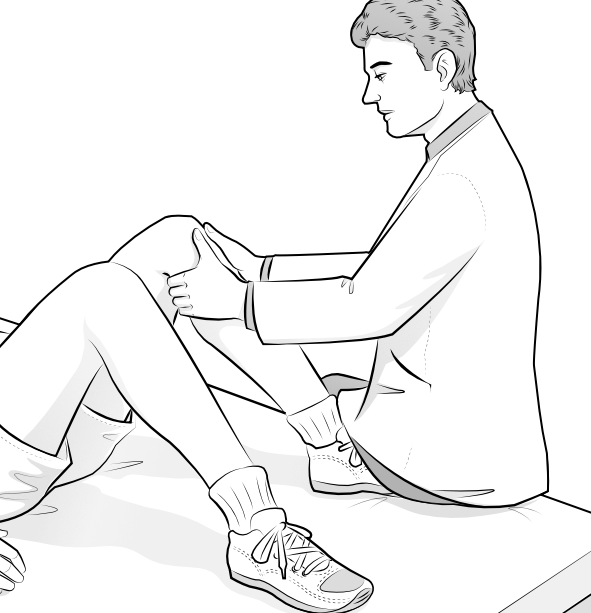The anterior drawer test is an indicator of the integrity of the anterior cruciate ligament.
 Page updated March 2024 by Dr Sheila Strover (Clinical Editor)
Page updated March 2024 by Dr Sheila Strover (Clinical Editor)

How to perform the anterior drawer test
-
Quote from peer-reviewed paper:
"The diagnosis of the ACL injury and the decision to reconstruct ACL could be reliably made with regards to the anterior drawer...."
Citation: Makhmalbaf H, Moradi A, Ganji S, Omidi-Kashani F. Accuracy of lachman and anterior drawer tests for anterior cruciate ligament injuries. Arch Bone Jt Surg. 2013 Dec;1(2):94-7. Epub 2013 Dec 15. PMID: 25207297; PMCID: PMC4151408.
What is the examiner feeling for in the anterior drawer test?
The examiner is evaluating any displacement of the tibia in relation to the femur when the tibia is drawn forwards (anteriorly).
If the cruciate ligament is torn or has come away from its bony attachment, this forwards displacement of the tibia will be greater than normal. Usually the comparison would be with the other limb.
-
Quote from peer-reviewed paper:
These researchers found "....somewhat limited utility of MRI in the diagnosis of ACL injury in the setting of a positive clinical examination....[but] MRI may continue to offer clinical utility in the evaluation of secondary injuries...."
Citation: Kulwin RL, Schmidt GJ, Snyder DA, Klitzman RG. Clinical Examination in the Diagnosis of Anterior Cruciate Ligament Injury: A Blinded, Cross-sectional Evaluation. J Am Acad Orthop Surg Glob Res Rev. 2023 Feb 8;7(2):e22.00123. doi: 10.5435/JAAOSGlobal-D-22-00123. PMID: 36758231; PMCID: PMC9915950.
Other cruciate tests -
From the Experts -
 2008 - Clinical assessment of ACL tears - by Mrs Lesley Hall (Physiotherapist)
2008 - Clinical assessment of ACL tears - by Mrs Lesley Hall (Physiotherapist)